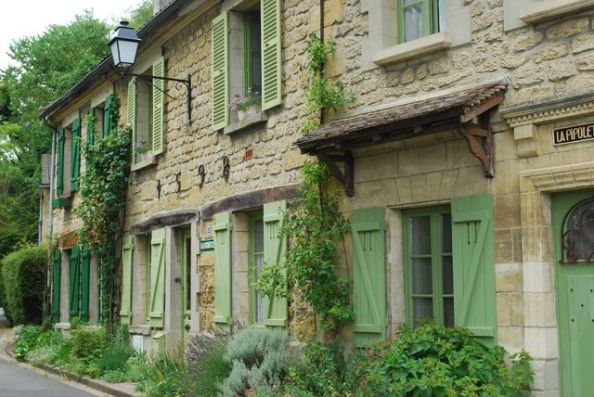
Van Gogh walked here
I took one last train trip before leaving Paris – to Auvers-sur-Oise, the tiny town about 20 miles from Paris where Vincent Van Gogh lived and painted a few months before finally shooting himself. I missed the daily train from Paris, so I took the RER (suburban train) to Pontoise and then a bus from the train station. Arriving on an empty street in front of city hall, I was surprised at how few tourists were there compared to the numbers at Giverny. I walked in solitude up a hill toward the “tourist information” building and watched alone a little video about Van Gogh’s stay in Auvers. Then, with the map provided, I followed a winding path through the village to visit some of the scenes Van Gogh painted while he was a resident. He was a prolific artist wherever he was, and there were a number of sites marked with a print of the painting that represented it, scattered up and down tiny roads and farmland.
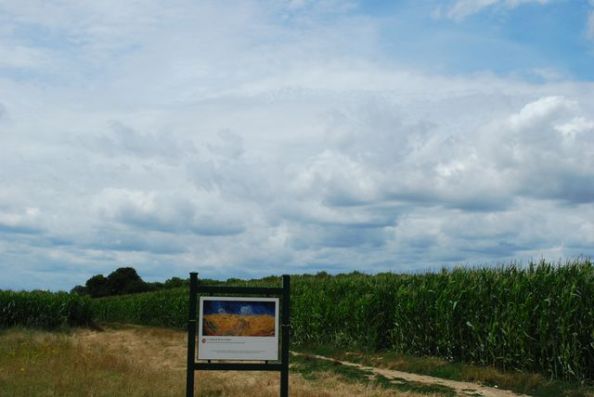
"Wheat Field with Crows"
I was alone most of the time, wandering through cobblestone streets and cornfields and past an old church – the painting of which I had seen the week before at the Musée d’Orsay. Then I headed up a dirt path to the cemetery where VanGogh is buried next to his brother Theo.
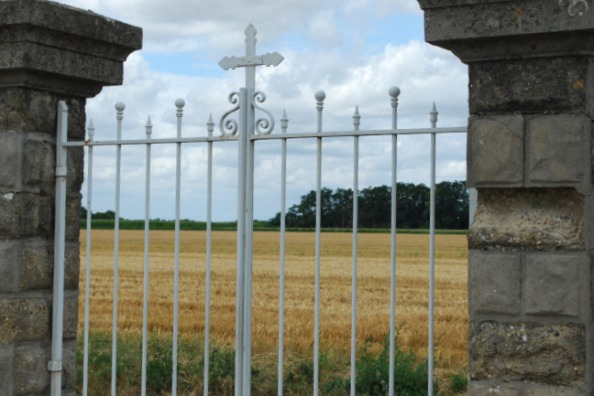
Wheat fields through the graveyard gates
I had expected a scene at the cemetery similar to the one at Père Lachaise in Paris, the tourist-crowded final resting place of a number of other famous people (Chopin, Oscar Wilde, Abelard and Heloise, and Jim Morrison are among those buried there). Instead, I walked through iron gates and entered a quiet, windy graveyard on top of a hill, and no one was there. I easily found the Van Gogh plot along the stone fence where the map said it would be. It was covered with ivy and weathered with time and was so simple. Sitting down on a stump across from it felt like something between hanging out with an old friend and being granted a private audience with one of the most famour people in the world. So beloved now, he lived some desperate last months here in Auvers-sur-Oise. He had sold only one painting during his ten-year art career, yet he was consumed with painting more – borrowing money for supplies, living on coffee and bread in a little room. He shot himself in one of the cornfields I walked through, too ashamed to ask his brother for money again.
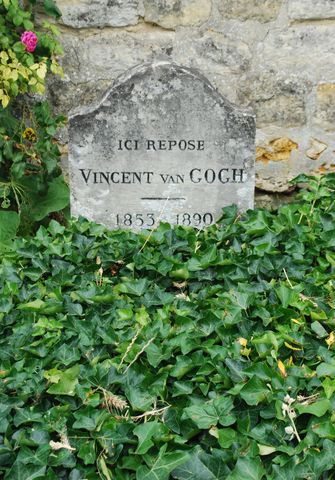
Van Gogh had planned to be a minister before he scandalized the church hierarchy by identifying with and living among the poverty-stricken peasants he ministered to, and then he flunked out of seminary. Later he would write to his brother Theo: “I have a terrible need of – dare I say – religion, so I go outside to paint the stars, to feel the stars in the infinite above clearly. “ As an art student, he originally used somber shades to realistically represent scenes, but he became fascinated – like the Impressionists he studied with – by light. Soon, he was transforming the everyday scenes around him – his bedroom, the church down the road, sunflowers in a field, people on the street – by painting the light that suffused them, and rendering them vibrant and alive on the canvas. Sitting on the stump next to his grave surrounded by some of the scenes he painted, I am thinking of how beloved those paintings became over the 120 years separating us. Now we crowd around them and buy prints for our homes; our children recognize and delight in them. We can’t get enough of his starry nights and vivid flowers and luminous people. I found myself hoping that Van Gogh somehow knows this, that his life and work and self were not the big mistake he thought they were that day he decided to end it, that he knows how those everyday things he rendered magical with his paintbrush touch us way over here in the 21st century.
I am about to head back to the everyday things of my life, which includes a bunch of broken people – the obviously broken ones who knock on the door in search of a place to sleep or a bit to eat or a pair of clean socks – as well as the not so obviously broken, which includes pretty much everyone else. I am thinking that it is a fine and wondrous thing to be sitting on a stump next to the grave of this famous Dutchman in a beautiful village in France, but that it’s probably time to direct my love and energy again to the people in my own world who are just as desperate to find meaning and usefulness in their own particular lives in the Here and Now. How I would like to see like Vincent did, to work the magic of turning the everyday into shimmering light, to have those eyes capable of beholding the truth behind the motliness. My last days in Paris I am beginning to really look forward to loving the people in my real life – seeing the Light in them.
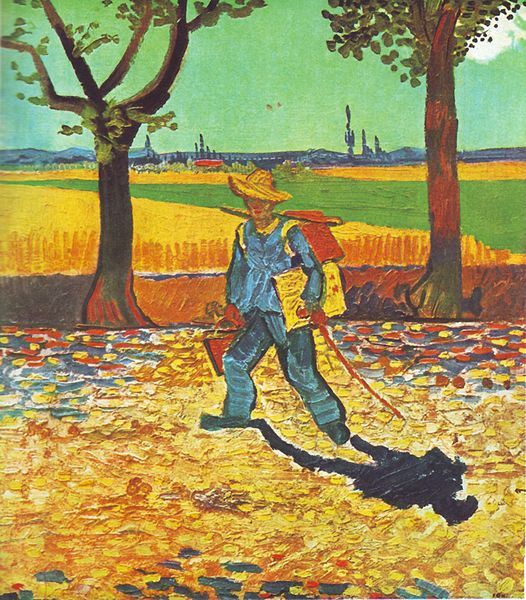
Poor bum on the side of the road...
A friend sent this lovely video…





Sheila B.
August 26, 2009
Kelli,
Thank you for a beautiful and thoughtful post. What an exceptional experience you had visiting Vincent. He is one of my favorite artists. I have a print of his painting, “The Harvest” hanging over my bed. I like to lay at the foot of my bed and just look at scene, wishing I could step right in for a visit. Glad you were able to walk those fields in person.
Sheila B.
Lynnette L.
November 7, 2009
Kelli,
Thank you for sharing your wonderful visit to Auvers-sur-Oise.
I, too, have always had a great appreciation of Van Gogh’s wonderful drawings and paintings.
Last year, I also had the opportunity to visit his resting place in Auvers-sur-Oise. I had the pleasure of taking the Grand France River Cruise from the tip of Normandy to the Provence region. I got to see many of the places that Van Gogh painted in Arles, St. Remy, and the Provence region.
I have seen his work in the Van Gogh Museum in Amsterdam as well as the Musee D’Orsay. However, nothing touched me more than sitting close to his grave after seeing the wheat field where he painted one of his last works. I was overcome with a feeling great humility remorse and sadness at the same time.
I, too, have often hoped that he can somehow feel the appreciation and respect of all the millions of people he has touched with his prolific number of works and masterpieces.
Lynnette